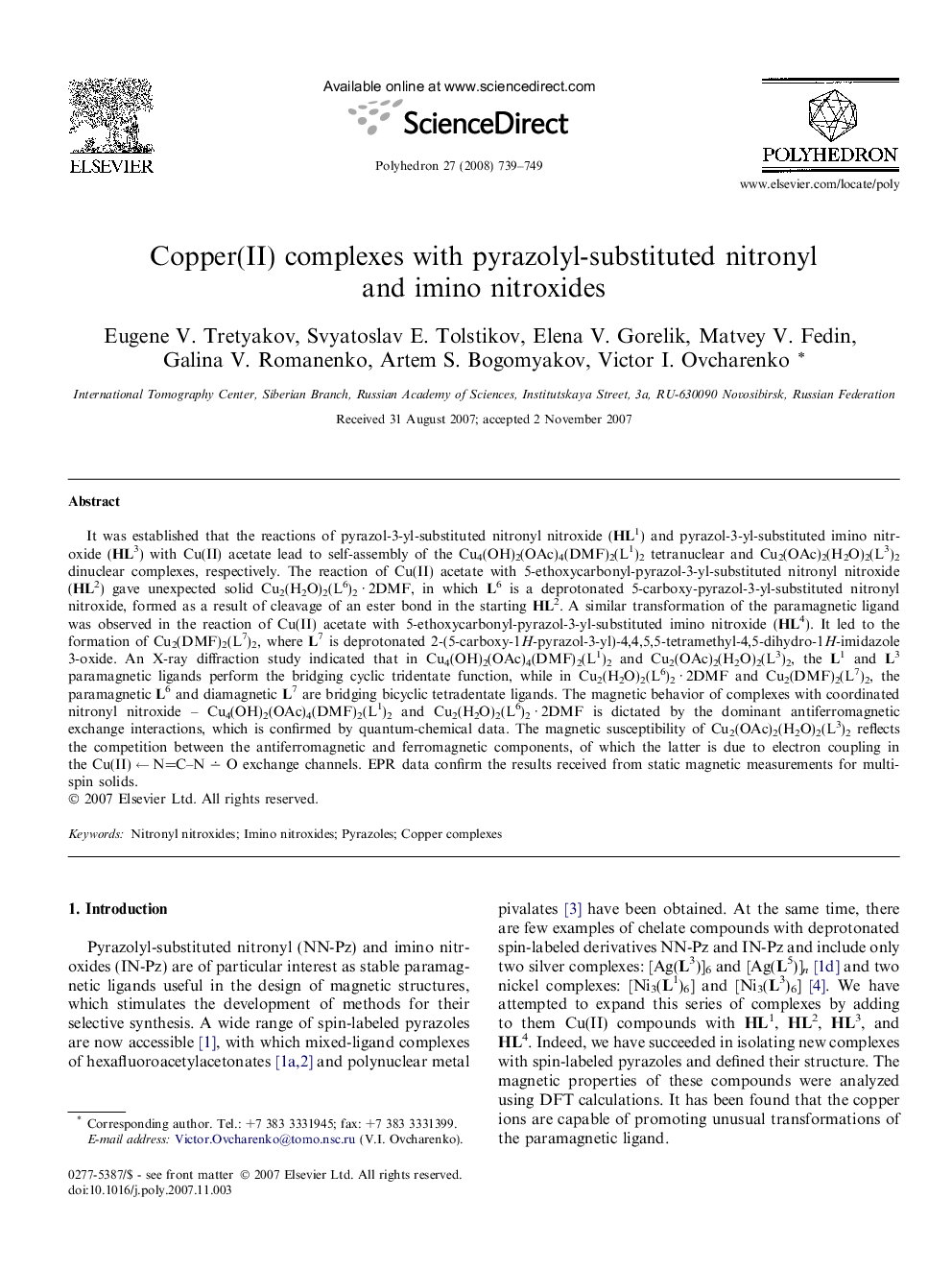| Article ID | Journal | Published Year | Pages | File Type |
|---|---|---|---|---|
| 1339658 | Polyhedron | 2008 | 11 Pages |
It was established that the reactions of pyrazol-3-yl-substituted nitronyl nitroxide (HL1) and pyrazol-3-yl-substituted imino nitroxide (HL3) with Cu(II) acetate lead to self-assembly of the Cu4(OH)2(OAc)4(DMF)2(L1)2 tetranuclear and Cu2(OAc)2(H2O)2(L3)2 dinuclear complexes, respectively. The reaction of Cu(II) acetate with 5-ethoxycarbonyl-pyrazol-3-yl-substituted nitronyl nitroxide (HL2) gave unexpected solid Cu2(H2O)2(L6)2 · 2DMF, in which L6 is a deprotonated 5-carboxy-pyrazol-3-yl-substituted nitronyl nitroxide, formed as a result of cleavage of an ester bond in the starting HL2. A similar transformation of the paramagnetic ligand was observed in the reaction of Cu(II) acetate with 5-ethoxycarbonyl-pyrazol-3-yl-substituted imino nitroxide (HL4). It led to the formation of Cu2(DMF)2(L7)2, where L7 is deprotonated 2-(5-carboxy-1H-pyrazol-3-yl)-4,4,5,5-tetramethyl-4,5-dihydro-1H-imidazole 3-oxide. An X-ray diffraction study indicated that in Cu4(OH)2(OAc)4(DMF)2(L1)2 and Cu2(OAc)2(H2O)2(L3)2, the L1 and L3 paramagnetic ligands perform the bridging cyclic tridentate function, while in Cu2(H2O)2(L6)2 · 2DMF and Cu2(DMF)2(L7)2, the paramagnetic L6 and diamagnetic L7 are bridging bicyclic tetradentate ligands. The magnetic behavior of complexes with coordinated nitronyl nitroxide – Cu4(OH)2(OAc)4(DMF)2(L1)2 and Cu2(H2O)2(L6)2 · 2DMF is dictated by the dominant antiferromagnetic exchange interactions, which is confirmed by quantum-chemical data. The magnetic susceptibility of Cu2(OAc)2(H2O)2(L3)2 reflects the competition between the antiferromagnetic and ferromagnetic components, of which the latter is due to electron coupling in the Cu(II) ← N=C–N ∸ O exchange channels. EPR data confirm the results received from static magnetic measurements for multispin solids.
Graphical abstractReactions of Cu2(OAc)4(H2O)2 with pyrazolyl-substituted nitronyl and imino nitroxides lead to tetra- and dinuclear copper(II) heterospin complexes, which tend to form polymer ribbons and layers in solids due to intermolecular H-bonding. In the case of pyrazole esters, the reaction with Cu2(OAc)4(H2O)2 causes cleavage of the ester bond and transformation of the starting nitroxides into the corresponding dianion.Figure optionsDownload full-size imageDownload as PowerPoint slide
